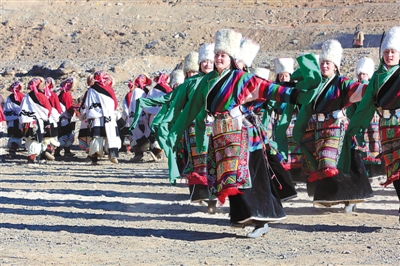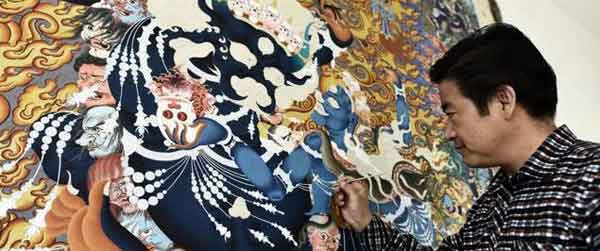328 cultural relics along ancient Tea-Horse Road exhibited in Gansu
The ancient Tea-Horse Road exhibition opened on March 22 in Lanzhou, capital of Gansu Province, displaying a total of 328 cultural relics, showing the origin, development and prosperity of the ancient road, Lanzhou Morning Post reported.
This exhibition is promoted by the Silk Road Museums Special Committee of the Chinese Association of Museums, and put together by provincial museums of Gansu, Qinghai, Shaanxi, Sichuan, Yunnan provinces as well as Tibet and Guangxi Zhuang autonomous regions.
The ancient Tea-Horse Road served as an important trade route among ethnic Tibetans, Hans and people of various ethnic groups in western China during the Tang Dynasty(618-907 A.D.). In the southern part, it traversed the Hengduan Mountain and the Himalaya across the borders of Yunnan, Sichuan and Tibet as well as the Jinsha River, the Lancang River and the Nujiang River basin, stretching eastward to the Pearl River Basin and all the way to Southeast Asia. In the northern part, the ancient Tea-Horse Road, as an offshoot route of the ancient Silk Road, helped the nomadic people of ethnic minorities to obtain tea and salt. The north and south ancient roads, linking the northwest and southwest of China and stretching to South Asia as well as Southeast Asia, has been taken as a passageway for different ethnic groups in western China to migrate, interact and integrate, and contributed to China’s economic and cultural exchanges and the spread of civilization. It is the only ancient post road in the country that is still in use today.
Your Comment
Name E-mailRelated News
-
;
-
-

-
Growth of traditional dance in northern Tibet
Traditional dance of northern Tibet pastoral area has gradually become one of Tibet’s original culture brands.
-
-
-

-
Regong art industry enriches local people
The recent years saw a thriving art industry in Regong, Qinghai, helping locals shake off poverty.
-
Based in Lhasa, Tibet Vista is a Tibet travel agency that specialized in Tibet permit, and Tibet tours for both private and group travelers at a local price!
•4 Days Lhasa City Group Tour from USD 460 •8 Days Everest Base Camp Group Tour from USD 850 •15 Days Mt.Kailash Group Tour from USD 1780 •2016 Tibet Train Tours from Beijing, Shanghai, Chengdu, Xining,etc










